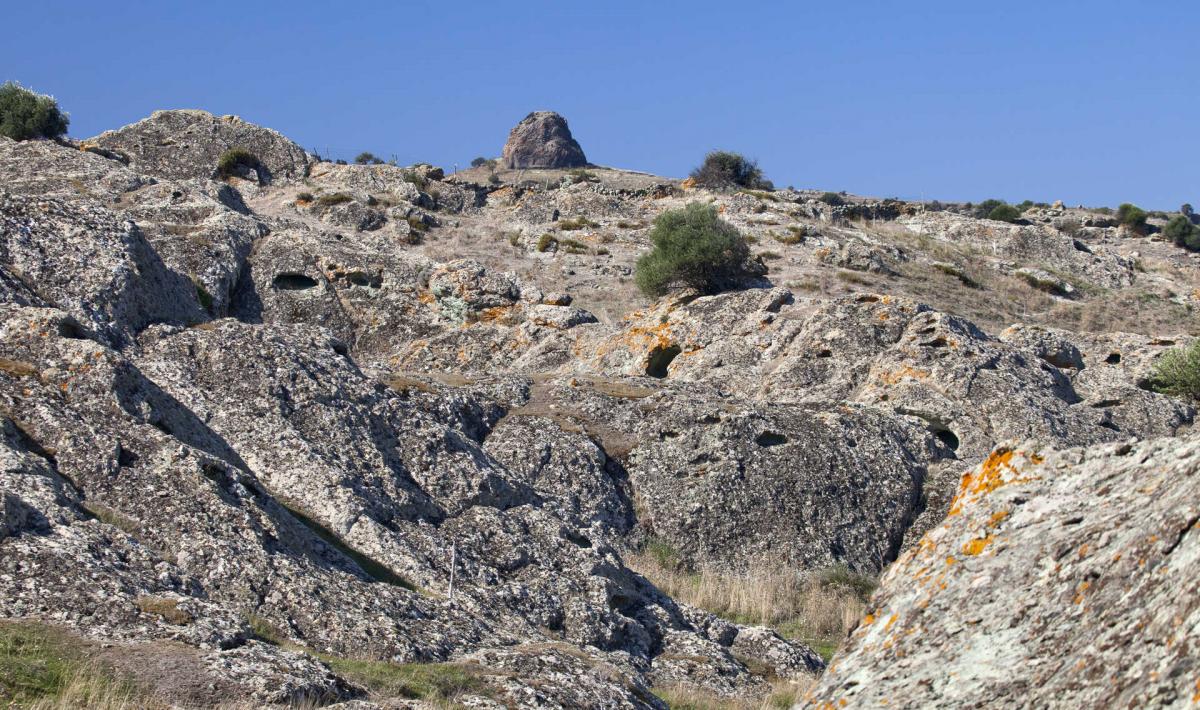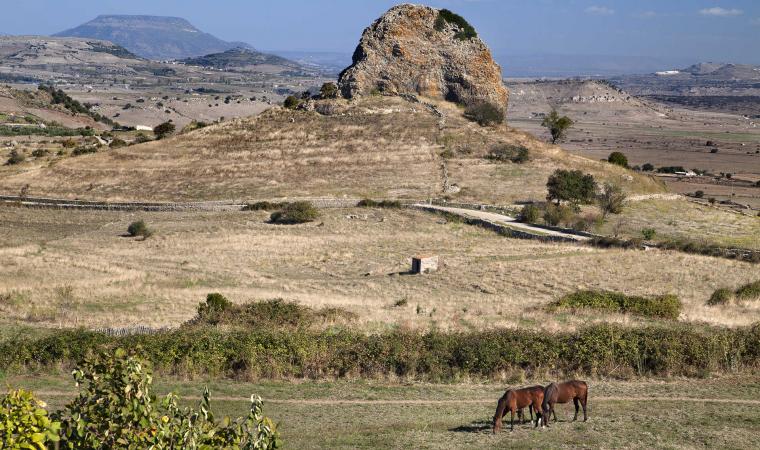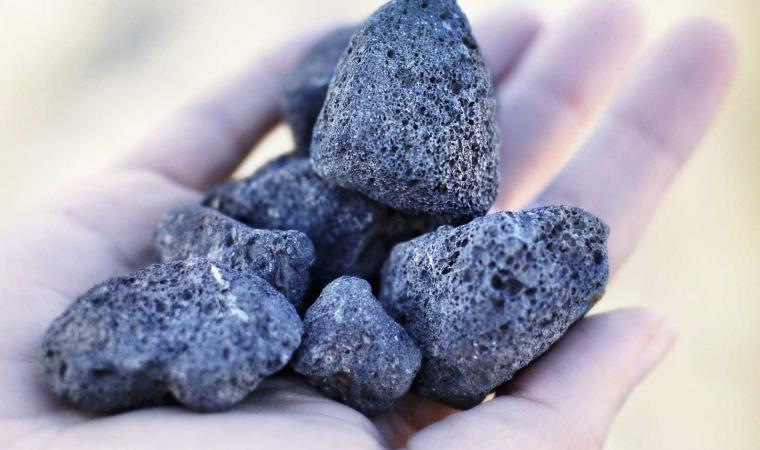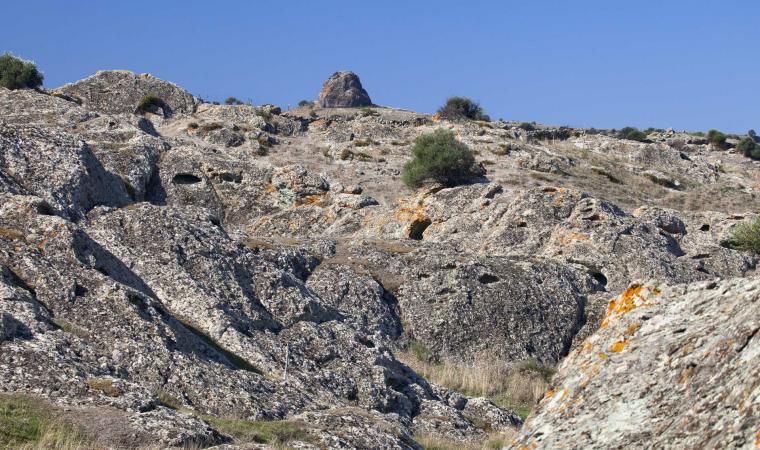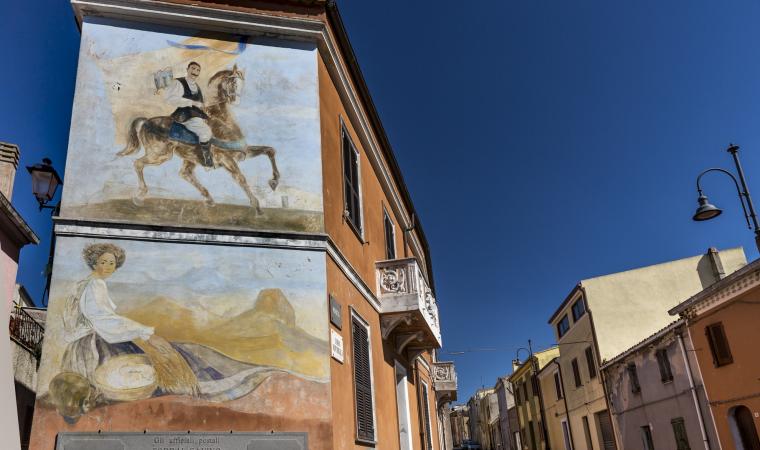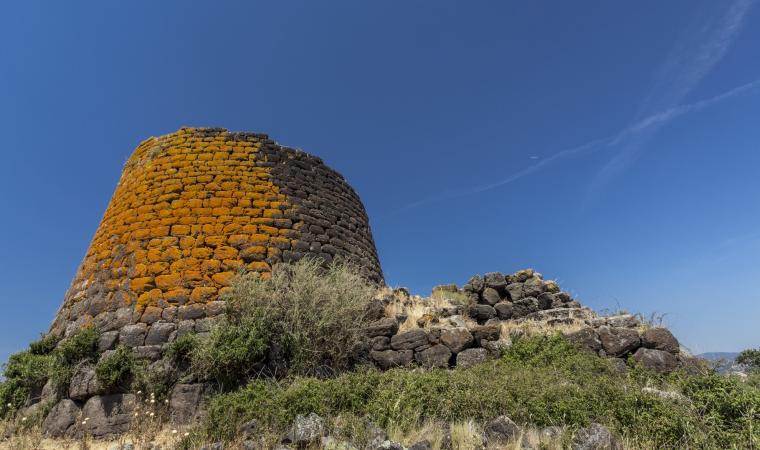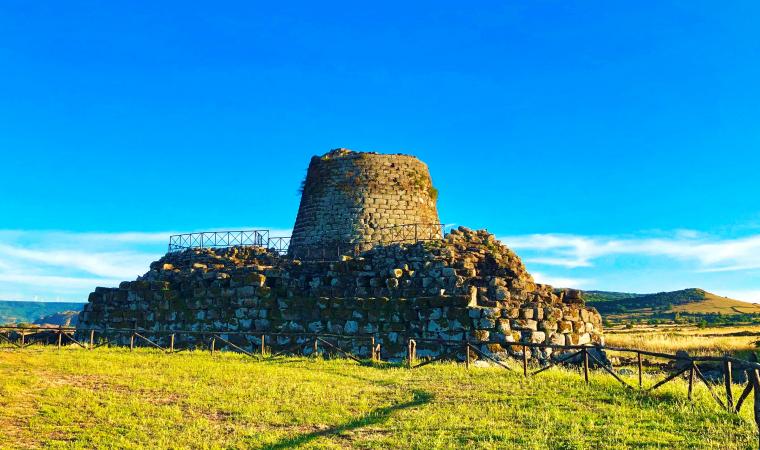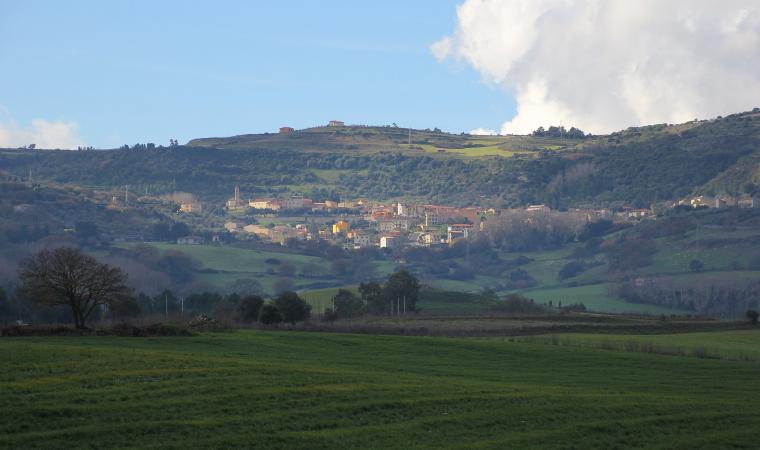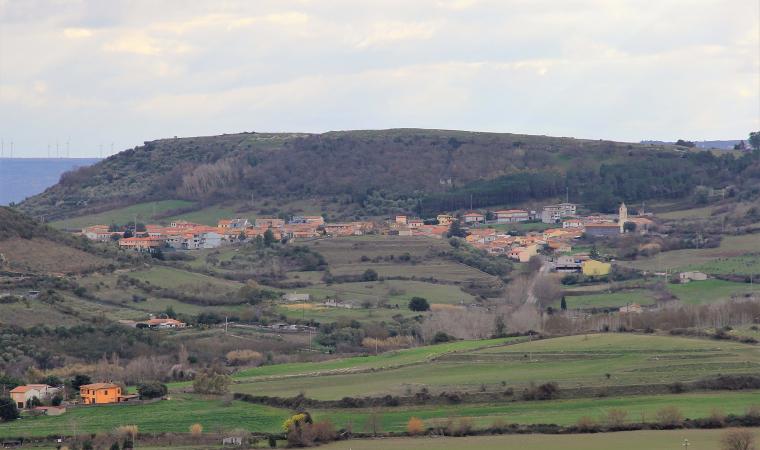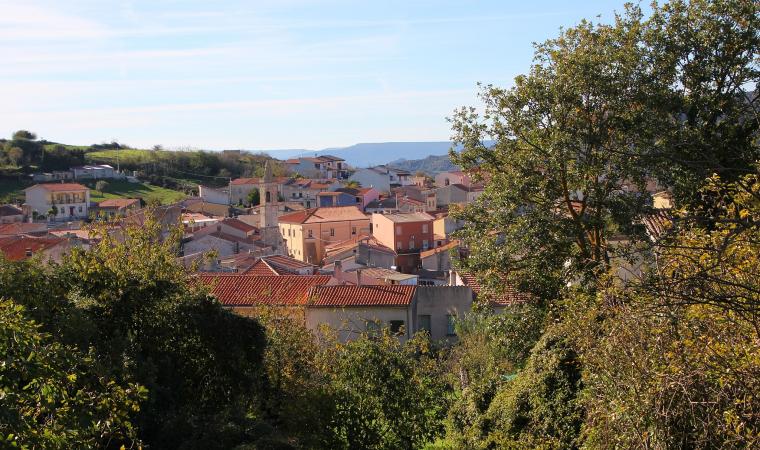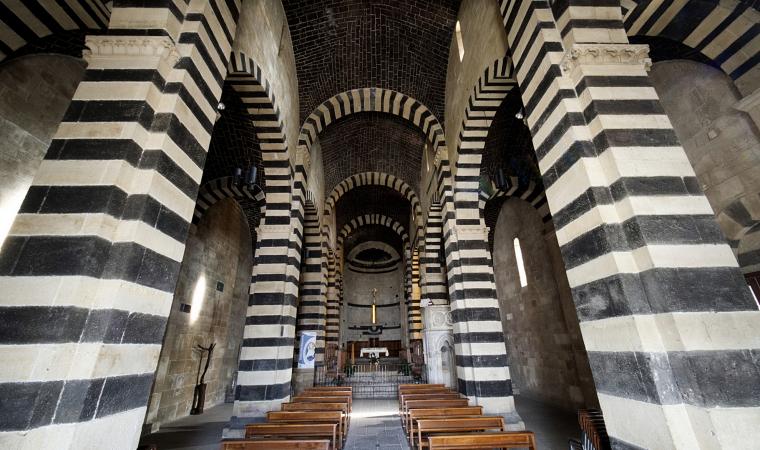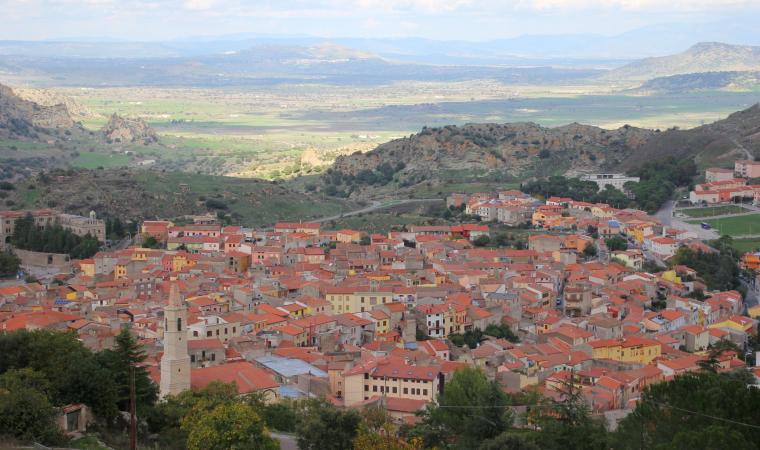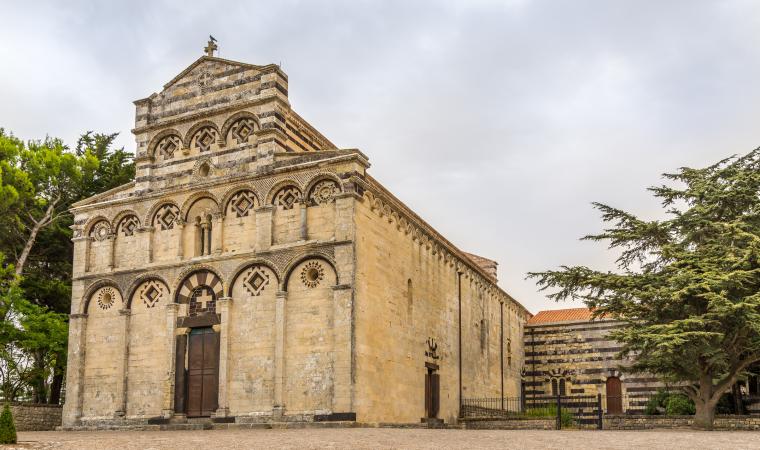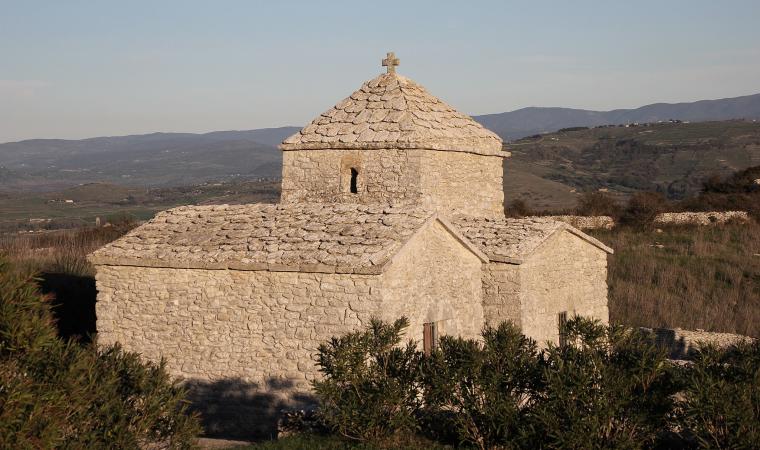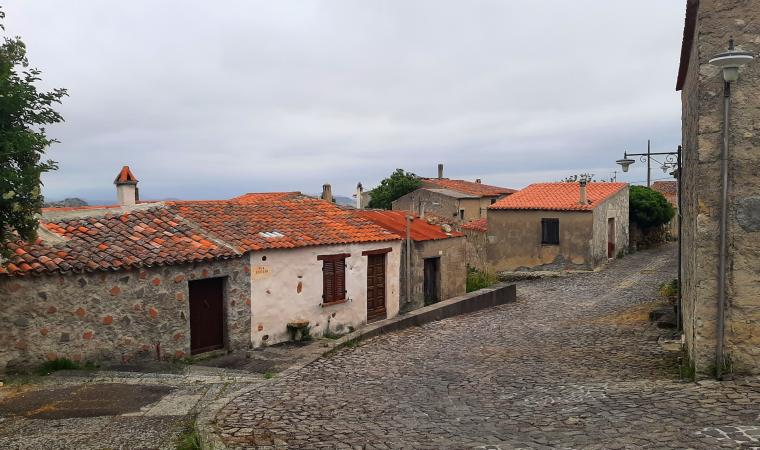Santu Bainzu hill in Thiesi with two small, almost twin, volcanic peaks, Pabulena at Ploaghe and Ruju at Siligo, the beautiful Mt. Annaru-Pòddighe of Giave and the tabular profile of Mount Pèlao are all in the area of various towns in the Logudoro. A series of five solitary craters stand out in more than 20 thousand square metres of the Province of Sassari. They were declared protected natural monuments in 1994 and together with other volcanic cones – including Cuccureddu of Cherémule and Oes of Torralba – dot the historical region of the Logudoro-Meilogu. A land of extinct volcanoes, home to unusual and unique landscapes: cinder cones and volcanic flows give it its peculiar conformation, with crests at times small and pointy, other times ones round, all here and there separated by flat intervals.
Mount Annaru-Pòddighe is the most characteristic one. Almost 500 metres high, it is an almost intact crater. It is from here that lava flowed, solidified and was then filled with sediment to become the vast plateau north-east of Giave. It is an isolated area, an ideal place for some great walks, especially in autumn and winter when a small lake forms at its centre. You can go down into the crater in summer to see the 50 metres high walls and the original geological structure. Just south of you’ll find sa Pedra Mendalza, and south of the mountain is a resurfaced volcanic conduit on whose slopes crows and goshawks nest.
All of Meilogu will fascinate you, both for naturalistic and historical reasons: from the cinder cones to the flat plateaus (mesas), from the thermal mineral springs to the woods and pasture fields, from traces of prehistory to those from medieval times. The area around the craters is home to Sardinia’s highest density of domus de Janas and nuraghi, the Valle dei Nuraghi with thirty complexes within a range of just a few hundred metres. Some are very famous, like Santu Antine at Torralba and nuraghe Oes, built with blocks of basaltic lava from the craters of mounts Annaru and Cuccureddu. The finds from some 200 nuraghi, of the 350 known in Meilogu, can be seen on display at the museum of Torralba.

